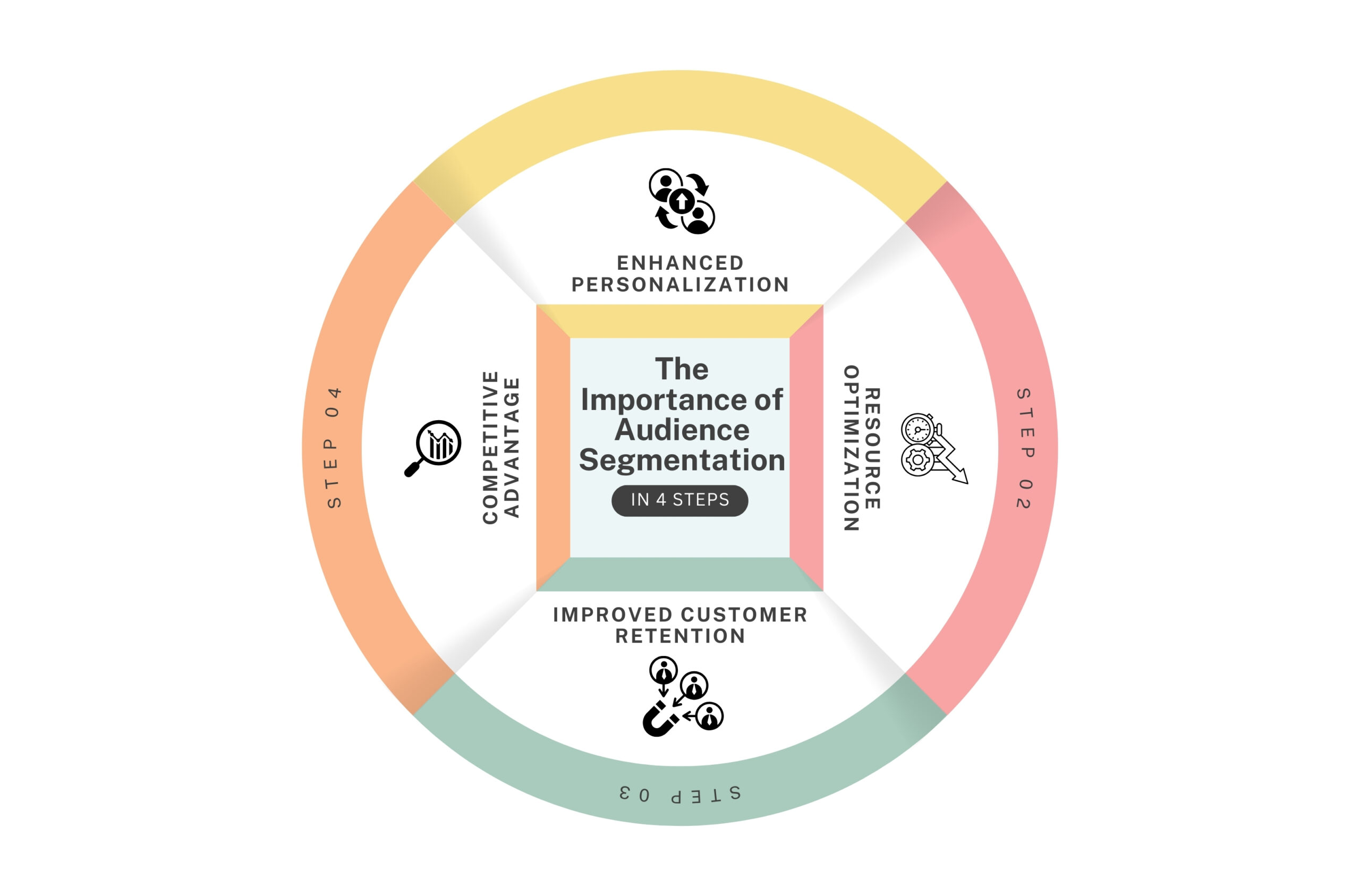In the era of customer-centricity, segmentation strategies play a vital role in helping businesses target the right audience with precision. The days of one-size-fits-everyone marketing are gone. That is where segmentation strategies come into play. By dividing your target market into distinct segments based on shared characteristics, behaviors, or preferences, businesses can tailor their marketing efforts to resonate with each group more efficiently.
In this blog, we will explore the significance of segmentation strategies, the importance of segmentation and explore various methods for targeting the right audience.
Contents
What are Segmentation Strategies?
Segmentation in marketing is the process of dividing a broader target market into smaller, more homogeneous groups or segments based on shared characteristics, behaviors, or preferences. It allows businesses to tailor their marketing efforts to specific groups for more effective communication and product/service delivery.
The Importance of Audience Segmentation
Audience segmentation is the foundation of modern marketing. It allows businesses to move away from generic marketing messages and connect with customers on a deeper level. By recognizing that not all consumers have the same needs, interests, and motivations, companies can create tailored campaigns that increase engagement and drive conversions.

1. Enhanced Personalization:
Segmentation enables businesses to craft messages and offers that are highly relevant to specific customer groups. When customers feel that a brand understands their unique preferences, they are more likely to engage and convert.
2. Resource Optimization:
Precise segmentation helps allocate resources effectively. Instead of spreading marketing efforts thin across a broad audience, businesses can concentrate on segments with the highest potential, maximizing their return on investment.
3. Improved Customer Retention:
Segment-specific strategies foster stronger customer loyalty. When customers perceive that a brand caters to their specific needs, they are more likely to remain loyal and recommend the brand to others.
Effective Segmentation Strategies Method
1. Demographic Segmentation:
This involves dividing the market based on demographic factors like age, gender, income, education, and occupation. It provides a basic understanding of who your customers are and allows you to customize messaging accordingly. For instance, a skincare brand might target different age groups with products designed for specific skin concerns.
2. Psychographic Segmentation:
This method categorizes customers based on their lifestyles, interests, values, and personality traits. Understanding psychographics helps in creating marketing campaigns that resonate with customers’ emotions and aspirations. An adventure travel company could tailor its offerings differently for thrill-seekers compared to those seeking relaxation.
3. Behavioral Segmentation:
Segmentation based on consumer behavior provides insights into how customers interact with a product or service. It considers factors like usage frequency, brand loyalty, purchasing patterns, and response to promotions. An e-commerce platform could target frequent shoppers with loyalty rewards and infrequent shoppers with special discounts.
4. Geographic Segmentation:
Dividing the market by geographical location can be especially useful for businesses with location-specific products or services. It allows tailoring marketing messages to regional preferences and cultural nuances.
5. B2B Segmentation:
Business-to-business segmentation focuses on identifying specific industries, company sizes, and job roles. This is crucial for companies selling products or services primarily to other businesses. Tailoring solutions to address the unique challenges faced by different industries enhances the chances of success.
Choosing the Right Segmentation Strategies
Selecting the appropriate segmentation strategy depends on the nature of your business and your marketing goals. Often, a combination of strategies provides a more comprehensive understanding of your audience. For instance, an electronics manufacturer could utilize demographic segmentation to target different age groups, while also using behavioral segmentation to target tech enthusiasts who frequently upgrade their devices.
Segmentation Challenges to Overcome
While segmentation offers numerous benefits, it’s not without challenges:
- Data Collection: Gathering accurate and comprehensive data for effective segmentation can be challenging. Companies need to balance obtaining relevant information with respecting customer privacy.
- Segment Overlap: Sometimes, customers may fall into multiple segments. Managing overlapping segments requires careful consideration to avoid contradictory messaging.
- Constant Adaptation: Consumer preferences evolve. Businesses need to continuously update and refine their segmentation strategies to stay relevant.
- Small Market Segments: Some segments might be too narrow to be profitable. Businesses must assess whether the effort required to target a tiny segment justifies the potential returns.
Conclusion
In marketing segmentation, understanding your audience is essential for success. By understanding the distinct needs, behaviors, and preferences of different customer groups, companies can craft tailored marketing campaigns that resonate and drive results.
Through demographic, psychographic, behavioral, geographic, and B2B segmentation, businesses can gain a competitive edge and foster lasting customer relationships. While segmentation does come with its challenges, the rewards in terms of improved personalization, resource optimization, and customer retention make it an indispensable tool in the modern marketer’s toolkit.
Frequently Asked Questions (FAQs)
- Can segmentation strategies be used in digital marketing?
Absolutely, Digital marketing offers advanced tools and data analytics that make segmentation strategies highly effective. Businesses can use customer data, website behavior, and online transactions to segment their audience and deliver personalized content is offered through channels like email, social media, and online advertising.
- How do I choose the right segmentation method for my business?
Choosing the right segmentation method depends on your business goals, product or service, and available data. It’s often effective to combine multiple segmentation methods for a more comprehensive view of your audience. Conduct market research and analyze customer data to determine the most relevant segmentation criteria.
- Why is segmentation important in marketing?
Segmentation is crucial in marketing because it helps businesses:
- Improve marketing efficiency by targeting the right audience.
- Build stronger customer relationships through personalized communication.
- Enhance product development by aligning offerings with customer needs.


